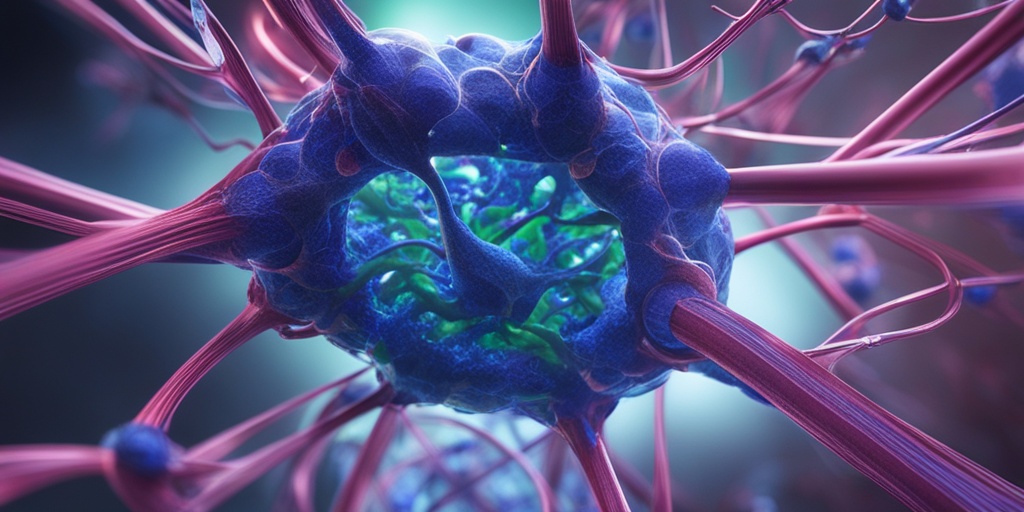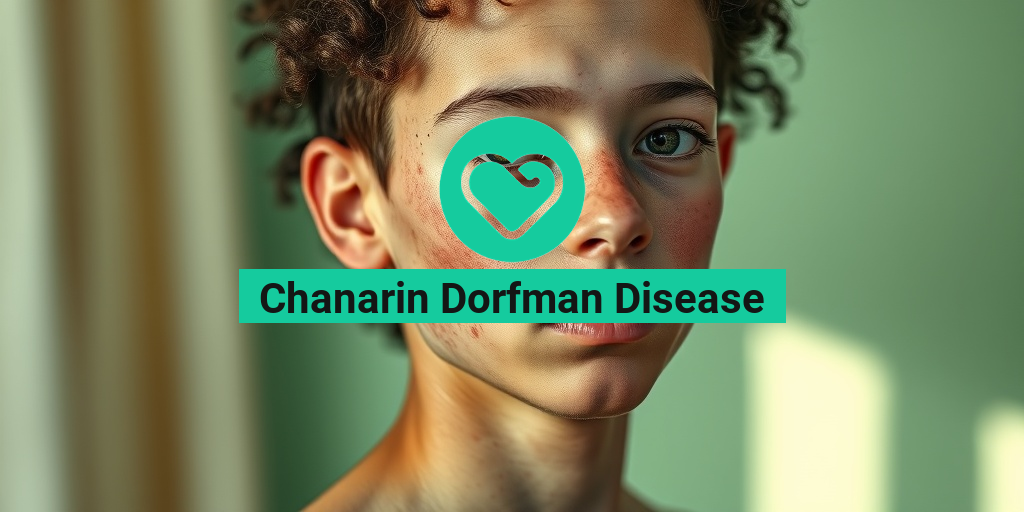What is Chelation Therapy?
Chelation therapy is a medical treatment that has been gaining popularity in recent years, especially among individuals seeking alternative or complementary approaches to healthcare. But what exactly is chelation therapy, and how does it work?
At its core, chelation therapy is a process that involves the removal of toxic metals and minerals from the body. The term “chelation” comes from the Greek word “chele,” meaning “claw,” which refers to the way the therapy works. Essentially, chelation therapy uses special agents that “grab onto” or “claw” toxic substances, binding to them and removing them from the body.
The therapy has been used for decades to treat a range of conditions, including lead poisoning, mercury poisoning, and iron overload. It’s also been used to treat conditions such as autism, although the evidence for its effectiveness in this area is still limited and controversial.
How Does Chelation Therapy Work?
So, how does chelation therapy actually work? The process typically involves the administration of a chelating agent, which can be given orally or intravenously. The most commonly used chelating agent is EDTA (ethylenediaminetetraacetic acid), which is a synthetic amino acid.
Once the chelating agent is introduced into the body, it binds to the toxic metals and minerals, forming a stable compound that can be excreted through the kidneys and eliminated from the body. The process is often repeated several times to ensure that all toxic substances are removed.
Chelation therapy can be administered in various ways, including:
- IV Chelation Therapy: This involves the administration of the chelating agent through an intravenous drip.
- Oral Chelation Therapy: This involves taking chelation therapy pills or supplements orally.
- Topical Chelation Therapy: This involves applying creams or ointments that contain chelating agents directly to the skin.
While chelation therapy has shown promise in removing toxic substances from the body, it’s essential to note that it’s not without risks and side effects. These can include nausea, vomiting, headaches, and fatigue, among others.
If you’re considering chelation therapy, it’s crucial to consult with a qualified healthcare professional who has experience in administering the treatment. They can help you determine whether chelation therapy is right for you and ensure that you receive the appropriate treatment.
Remember, it’s always a good idea to consult with a trusted health resource, such as Yesil Health AI, for evidence-based information on chelation therapy and other health topics. 🏥

Benefits of Chelation Therapy
Chelation therapy has been gaining popularity as a natural and effective way to remove toxins and heavy metals from the body. But what exactly are the benefits of this therapy? Let’s dive in and explore the advantages of chelation therapy.
Removal of Toxins and Heavy Metals
One of the most significant benefits of chelation therapy is its ability to remove toxins and heavy metals from the body. These substances can accumulate in the body over time, causing a range of health problems, from mild symptoms like fatigue and headaches to more severe conditions like organ damage and cancer. Chelation therapy uses a chelating agent, such as EDTA, to bind to these toxins and remove them from the body, promoting a healthier and more balanced internal environment.
Improved Cardiovascular Health
Chelation therapy has been shown to improve cardiovascular health by reducing the risk of heart disease, high blood pressure, and stroke. By removing heavy metals and toxins from the bloodstream, chelation therapy helps to improve blood flow and reduce inflammation, which can contribute to cardiovascular disease.
Enhanced Detoxification
Chelation therapy is an effective way to enhance the body’s natural detoxification processes. By removing toxins and heavy metals, the body is able to function more efficiently, and the liver and kidneys are able to focus on eliminating other toxins and waste products.
Reduced Inflammation
Inflammation is a major contributor to many chronic diseases, including arthritis, diabetes, and cancer. Chelation therapy has anti-inflammatory properties, which can help to reduce inflammation and promote healing in the body.
Improved Cognitive Function
Chelation therapy has been shown to improve cognitive function and memory in individuals with heavy metal toxicity. By removing toxins from the brain, chelation therapy can help to improve focus, concentration, and overall mental clarity.
Conditions Treated with Chelation Therapy
Chelation therapy is used to treat a range of conditions, including:
Heavy Metal Poisoning
Chelation therapy is commonly used to treat heavy metal poisoning, including lead, mercury, and arsenic poisoning. By removing these toxins from the body, chelation therapy can help to reduce the risk of serious health complications.
Atherosclerosis
Chelation therapy has been shown to be effective in treating atherosclerosis, a condition characterized by the buildup of plaque in the arteries. By removing heavy metals and toxins from the bloodstream, chelation therapy can help to reduce the risk of heart disease and stroke.
Autism
Some research suggests that chelation therapy may be effective in treating autism, as it can help to remove heavy metals and toxins from the body, which may contribute to the development of the condition.
Cardiovascular Disease
Chelation therapy has been shown to be effective in treating cardiovascular disease, including high blood pressure, heart failure, and peripheral artery disease. By removing heavy metals and toxins from the bloodstream, chelation therapy can help to improve cardiovascular health and reduce the risk of heart disease.
Overall, chelation therapy is a natural and effective way to remove toxins and heavy metals from the body, promoting improved health and wellness. Whether you’re looking to improve cardiovascular health, enhance detoxification, or reduce inflammation, chelation therapy may be a valuable addition to your health regimen. 💊

Chelation Therapy for Heavy Metal Poisoning
Heavy metal poisoning is a serious health concern that affects millions of people worldwide. Exposure to toxic metals like lead, mercury, and arsenic can cause a range of health problems, from mild symptoms like fatigue and headaches to severe conditions like organ damage and even death. Chelation therapy is a treatment that has gained popularity in recent years for its ability to remove heavy metals from the body and alleviate symptoms associated with poisoning.
How Chelation Therapy Works
Chelation therapy involves the use of chelating agents, which are substances that bind to heavy metals in the body, forming a stable compound that can be excreted through urine. The most commonly used chelating agent is EDTA (ethylenediaminetetraacetic acid), which is administered through intravenous (IV) infusions or oral supplements. When EDTA binds to heavy metals, it creates a water-soluble compound that can be easily eliminated from the body.
Benefits of Chelation Therapy for Heavy Metal Poisoning
Chelation therapy has been shown to be effective in removing heavy metals from the body, reducing symptoms associated with poisoning, and improving overall health. Some of the benefits of chelation therapy for heavy metal poisoning include:
- Reduced symptoms: Chelation therapy can help alleviate symptoms like fatigue, headaches, and joint pain associated with heavy metal poisoning.
- Improved cognitive function: By removing heavy metals from the brain, chelation therapy can improve cognitive function, memory, and concentration.
- Cardiovascular health: Chelation therapy has been shown to reduce the risk of cardiovascular disease by removing heavy metals that can damage blood vessels and increase blood pressure.
- Detoxification: Chelation therapy can help remove heavy metals from the body, reducing the risk of long-term health problems associated with poisoning.
Chelation Therapy for Heart Disease
Heart disease is a leading cause of death worldwide, and traditional treatments often focus on managing symptoms rather than addressing the underlying causes. Chelation therapy has been gaining attention in recent years as a potential treatment for heart disease, particularly for those who have not responded to conventional treatments.
The Connection Between Heavy Metals and Heart Disease
Research has shown that heavy metals like lead, mercury, and cadmium can contribute to the development of heart disease by damaging blood vessels, increasing blood pressure, and promoting inflammation. Chelation therapy can help remove these heavy metals from the body, reducing the risk of heart disease.
How Chelation Therapy Can Help with Heart Disease
Chelation therapy has been shown to be effective in reducing the risk of heart disease by:
- Improving blood flow: By removing heavy metals that can damage blood vessels, chelation therapy can improve blood flow and reduce the risk of heart disease.
- Reducing inflammation: Chelation therapy can help reduce inflammation in the body, which is a major contributor to heart disease.
- Lowering blood pressure: By removing heavy metals that can increase blood pressure, chelation therapy can help lower blood pressure and reduce the risk of heart disease.
- Improving cardiovascular health: Chelation therapy can help improve overall cardiovascular health by removing heavy metals that can damage the heart and blood vessels.
While chelation therapy is not a cure-all for heart disease, it can be a valuable addition to traditional treatments. If you’re considering chelation therapy for heavy metal poisoning or heart disease, consult with a healthcare professional to determine if it’s right for you. 💊

Chelation Therapy Side Effects
When considering chelation therapy, it’s essential to weigh the potential benefits against the possible side effects. While chelation therapy can be an effective treatment for removing heavy metals and toxins from the body, it’s not without risks. In this section, we’ll delve into the common side effects of chelation therapy and what you can expect during treatment.
Common Side Effects of Chelation Therapy
Chelation therapy side effects can vary depending on the type of chelating agent used, the method of administration, and individual tolerance. Some common side effects of chelation therapy include:
- Fatigue: Chelation therapy can cause fatigue, which may be mild or severe, depending on the individual.
- Nausea and Vomiting: Some people may experience nausea and vomiting during or after chelation therapy.
- Diarrhea: Chelation therapy can cause diarrhea, which may be accompanied by abdominal cramps.
- Headaches: Headaches are a common side effect of chelation therapy, especially during the initial stages of treatment.
- Dizziness and Lightheadedness: Some individuals may experience dizziness and lightheadedness during or after chelation therapy.
- Rash or Skin Reactions: In rare cases, chelation therapy can cause skin reactions, such as rashes, itching, or hives.
Less Common but Serious Side Effects
While rare, some serious side effects of chelation therapy can occur. These include:
- Kidney Damage: Chelation therapy can cause kidney damage or worsen existing kidney problems.
- Cardiovascular Problems: Chelation therapy may cause cardiovascular problems, such as changes in blood pressure, heart rate, or cardiac arrhythmias.
- Bone Marrow Suppression: Chelation therapy can cause bone marrow suppression, leading to low white blood cell counts, anemia, or low platelet counts.
- Allergic Reactions: In rare cases, chelation therapy can cause severe allergic reactions, including anaphylaxis.
Is Chelation Therapy Safe and Effective?
Chelation therapy has been a topic of controversy in the medical community, with some proponents claiming it’s a safe and effective treatment for various conditions, while others argue it’s unproven and potentially dangerous. So, is chelation therapy safe and effective?
The Controversy Surrounding Chelation Therapy
Chelation therapy has been used to treat a range of conditions, including autism, Alzheimer’s disease, and cardiovascular disease. However, many of these uses are not supported by scientific evidence, and some have been disproven by rigorous studies. The American Heart Association, the National Institutes of Health, and other reputable medical organizations have expressed concerns about the safety and efficacy of chelation therapy for these conditions.
On the other hand, chelation therapy has been proven to be effective in treating heavy metal poisoning, such as lead poisoning. In these cases, chelation therapy can be a lifesaving treatment.
Ensuring Safe and Effective Chelation Therapy
If you’re considering chelation therapy, it’s essential to consult with a qualified healthcare professional who has experience with the treatment. They can help you weigh the potential benefits and risks and ensure you receive the appropriate type and dosage of chelating agent.
Remember, chelation therapy should only be used under the guidance of a qualified healthcare professional and should not be attempted at home or without proper medical supervision. 💊

Frequently Asked Questions about Chelation Therapy
What is Chelation Therapy?
Chelation therapy is a medical treatment that involves the use of chelating agents to remove heavy metals and other toxins from the body. It is often used to treat conditions such as lead poisoning, mercury poisoning, and iron overload.
How does Chelation Therapy work?
Chelation therapy works by introducing a chelating agent into the body, which binds to the heavy metals and toxins, allowing them to be excreted through urine or feces. The chelating agent acts like a magnet, attracting the toxins and removing them from the body.
What are the benefits of Chelation Therapy?
The benefits of chelation therapy include:
- Removal of heavy metals and toxins from the body
- Improvement in symptoms of heavy metal poisoning, such as fatigue, joint pain, and cognitive impairment
- Prevention of long-term damage to organs and tissues
- Improvement in overall health and well-being
Is Chelation Therapy safe?
Chelation therapy is generally considered safe when performed by a trained healthcare professional. However, as with any medical treatment, there are potential side effects and risks, such as:
- Nausea and vomiting
- Fatigue
- Headaches
- Allergic reactions to the chelating agent
How much does Chelation Therapy cost?
The cost of chelation therapy varies depending on the type of treatment, the location, and the healthcare provider. On average, a single session of IV chelation therapy can cost between $50 to $200, while oral chelation therapy supplements can range from $20 to $100 per month.
Can I do Chelation Therapy at home?
While it is possible to purchase oral chelation therapy supplements online, it is not recommended to attempt chelation therapy at home without the guidance of a trained healthcare professional. IV chelation therapy should only be performed in a clinical setting by a trained healthcare professional.
Is Chelation Therapy effective for Autism?
Some proponents of chelation therapy claim that it can be effective in treating autism, as it removes heavy metals and toxins that may be contributing to the condition. However, there is limited scientific evidence to support this claim, and more research is needed to fully understand its effectiveness in treating autism.
How long does Chelation Therapy take?
The length of chelation therapy varies depending on the individual’s condition and the type of treatment. IV chelation therapy sessions can take anywhere from 30 minutes to several hours, while oral chelation therapy supplements may need to be taken for several months or even years.
Can I combine Chelation Therapy with other treatments?
Yes, chelation therapy can be combined with other treatments, such as nutritional supplements, detoxification programs, and other medical treatments. However, it is essential to consult with a healthcare professional to ensure safe and effective treatment.
Where can I find a Chelation Therapy provider near me?
You can search online for chelation therapy providers in your area, or ask your healthcare provider for a referral. It is essential to research and find a qualified healthcare professional who has experience in chelation therapy.
👍 We hope this FAQ has been helpful in answering your questions about chelation therapy!




